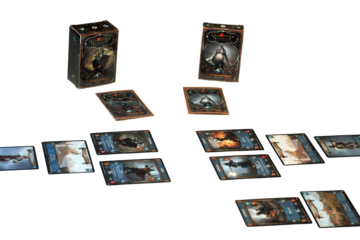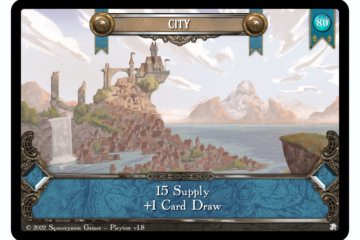When researching development for this game, trying to answer the question why there are no great point-based deck building card games, we came across an interesting article – Untapped Potential in Card Games: Deck-Building Point Costs
While we had a notion of what the challenges of a point based deck building card game would entail, this article provided a lot of insight from a professional game designer. One key quote from the article:
“So why don’t card battlers use point-based deckbuilding? There’s actually a pretty good reason. When both players start with all their units on the field, both players are guaranteed access to all of their squad points. In a card battler like hearthstone where you draw only a portion of your deck each game, investing most of your points in a few stronger cards would produce massively swingy games. Asking players to pay a cost upon playing the card, as most card battlers do, solves this issue. You only pay for what you play.”
Dan Felder – https://danfelder.net/2017/03/09/untapped-potential-in-card-games-deck-building-point-costs/
This makes a lot of sense – in Warhammer Fantasy one can field at the start of the game 5 units of goblins, or 1 unit of Black Orcs (generalization). You get access to all your units, all at once. However in a card game, not only do you have to churn through your deck to try and get units, you also have a set number of actions to play your cards.
So, a deck of 10 high-powered units @ 100 points each, vs. a deck of 20 low powered units @ 50 points each – all else being equal, odds are the deck of 10 high powered units will win every time.
There are a few game mechanics we’ll explore to counteract this in-balance.
- In-game balance
- Supply limit. A player can have more weak units on the board than strong units. (Edit: Though as pointed out in the comments below, this likely defeats the purpose of a points based deck builder)
- Bonuses for weak units. Example: 2 weak units together become stronger. (Like two goblin units in Warhammer working together)
- Deck creation
- Like Warhammer, constraints forcing mins and maxes for your deck to contain set percentages of unit/card types.
- Set min-deck size depending on deck points.
- Point values of cards and units
- Max number of same card in deck
- Unit abilities – cheap units have unique abilities (draw card when played, no action cost to play, etc.)
- Deck churn – players can churn through their deck during a game.
In future posts we’ll go over testing these game mechanics (and more) to see what works, what doesn’t, and what is fun!



4 Comments
Dan Felder · March 10, 2020 at 12:46 am
Interesting. If you put a supply limit on what’s in play at a time, you probably don’t also need to count point costs for the total deck.
admin · March 10, 2020 at 9:48 pm
Thanks Dan! As a humble amateur game designer, I really appreciate the comment. There’s about 1000 questions I could ask about what we want to test and what challenges we’ve hit. But to keep it short, your comment is insightful and is making us rethink the supply limit rules we’ve been testing.
Game Balance & Points Based Deck-Building - Part 2 - Squeezymon Games · November 22, 2021 at 3:39 pm
[…] part 1, we discussed why a points based deck builder is challenging, and touched on potential game ideas […]
Incorporating Point Values Into Gameplay - Squeezymon Games · July 22, 2022 at 2:39 pm
[…] construct their decks around it. It’s provided a host of unique challenges (read all about it here & […]